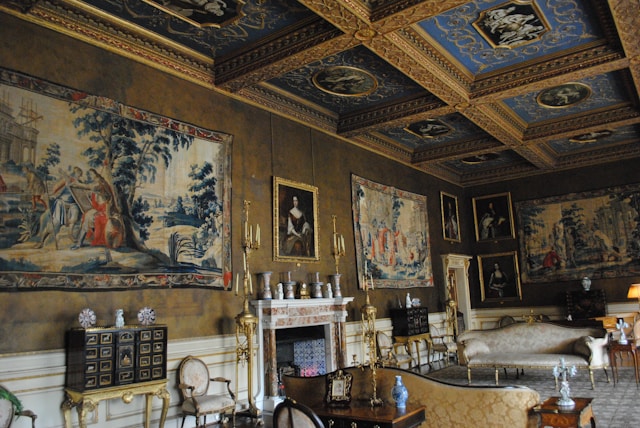Poker and art create a captivating fusion, weaving strategic depth with visual deception. Optical illusions, with their knack for twisting perception, mirror the clever bluffs and electric tension of a poker table. Museums and galleries harness this synergy, showcasing poker-themed art to draw diverse crowds and elevate cultural events. Affiliate programs, particularly those centered on poker, amplify these efforts by linking creative exhibits with savvy digital marketing. This article delves into how optical illusions in poker art craft immersive experiences, how museums integrate these works, and how affiliate programs fuel cultural promotion, transforming galleries into vibrant hubs of creativity and engagement.
Captivating Elements of Optical Illusions in Poker Art
Optical illusions mesmerize by bending reality, much like a poker player’s subtle bluff outsmarts an opponent. Artists craft poker-inspired works with vivid colors, swirling patterns, and shifting shapes that pulse with the thrill of a high-stakes game. Picture a canvas where playing cards dissolve into hypnotic spirals, or neon-lit poker chips seem to dance off the surface, evoking the rush of a casino floor. These pieces pull in art enthusiasts and gaming fans alike, creating a magnetic draw for galleries. By blending poker’s dramatic imagery with visual trickery, these artworks spark curiosity and invite visitors to explore cultural spaces in a fresh, engaging way. The allure lies in their ability to challenge perception while echoing the strategic dance of poker, making every exhibit a conversation starter.
Integration of Poker Art in Museum Exhibits
Museums embrace poker-themed art to refresh their appeal and connect with diverse audiences, from young creatives to seasoned gaming fans. Exhibits fuse optical illusions with poker motifs, like ace cards morphing into kaleidoscopic patterns or dice rolling through abstract grids, to explore themes of risk, reward, and human psychology. These displays resonate by tapping into poker’s universal appeal, blending strategy with the thrill of chance. Curators amplify engagement with interactive events, such as poker-inspired art workshops or guided tours that unpack the symbolism behind each piece. Benefits include:
- Increased attendance from gaming enthusiasts drawn to unique, thematic exhibits.
- Enhanced storytelling through art that mirrors strategic thinking and emotional stakes.
- Stronger community connections via hands-on cultural programs and events.
Significance of Affiliate Programs in Cultural Promotion
Poker affiliate programs are pivotal for elevating cultural events, bridging museums with digital audiences in a cost-effective way. Influencers, bloggers, and gaming enthusiasts promote poker-themed exhibits, driving traffic to galleries through targeted campaigns. For instance, an affiliate might share a virtual tour of poker-inspired illusions, reaching audiences who rarely visit museums, such as online gaming communities. These programs thrive by leveraging:
- Social media campaigns to generate buzz around innovative art events and exhibitions.
- Authentic, relatable content that resonates deeply with gaming and art communities.
- Cost-effective outreach, tapping into affiliates’ established audiences for maximum reach.
- Global exposure, connecting international fans to local cultural initiatives and events.
By partnering with platforms like G.Partners, museums amplify their message, blending poker’s excitement with artistic allure to captivate new crowds and strengthen cultural impact in a digital age.
Support from Poker Affiliate Programs for Art Events
Poker affiliate programs fuel cultural initiatives by aligning gaming passion with artistic projects, creating a seamless bridge between entertainment and culture. Affiliates promote poker-themed art nights, where galleries host simulated games alongside illusion-based exhibits, drawing crowds eager for unique experiences. The process unfolds through strategic steps:
- Affiliates collaborate with poker platforms to craft compelling content, like blog posts or videos about art events.
- They share links to museum exhibits, earning commissions for ticket sales, donations, or virtual tour sign-ups.
- Campaigns highlight poker art’s allure, attracting both gaming fans and art enthusiasts to cultural spaces.
- Affiliates leverage social media to share stories of local artists inspired by poker-themed exhibits.
- They partner with galleries to promote virtual tours, expanding access to global audiences.
- Content emphasizes practical benefits, like community engagement through interactive art events.
- Affiliates track engagement metrics to refine strategies, ensuring maximum reach and impact.
These efforts drive physical and digital visitors to galleries, making cultural events vibrant, accessible, and relevant, ensuring museums thrive in a competitive digital landscape.
Influence of Poker Art and Affiliates on Cultural Trends
Poker art, infused with optical illusions, redefines how galleries engage modern audiences, blending gaming culture with visual intrigue to create experiences that feel fresh and relevant. Affiliates amplify this impact through dynamic campaigns, like Instagram reels showcasing a poker chip mural that shifts under different lighting, captivating viewers worldwide. Future possibilities include:
- Virtual reality tours where visitors “play” poker within an interactive illusion, blending art and gaming.
- Collaborative exhibits with poker platforms to fund cultural projects and community initiatives.
- Global livestreams of poker-themed art events, promoted by affiliates to reach international audiences.
- Augmented reality apps that let users explore poker art interactively, enhancing engagement.
- Pop-up galleries in gaming hubs, promoted by affiliates to merge art and poker culture.
- Crowdsourced art projects inspired by poker, driven by affiliate-led campaigns.
With Brazil aiming to expand cultural engagement, affiliates could shape these trends, promoting innovative, accessible events that resonate with diverse audiences. By fusing art, gaming, and affiliate marketing, museums become vibrant destinations, setting new standards for cultural trends and ensuring long-term relevance in a fast-evolving world.
